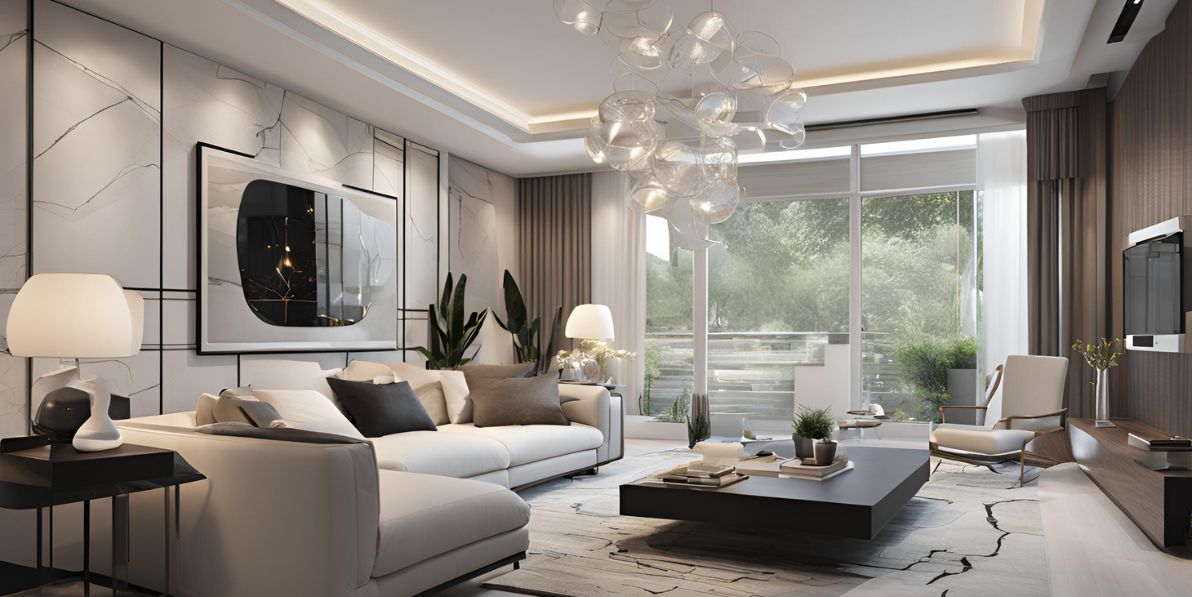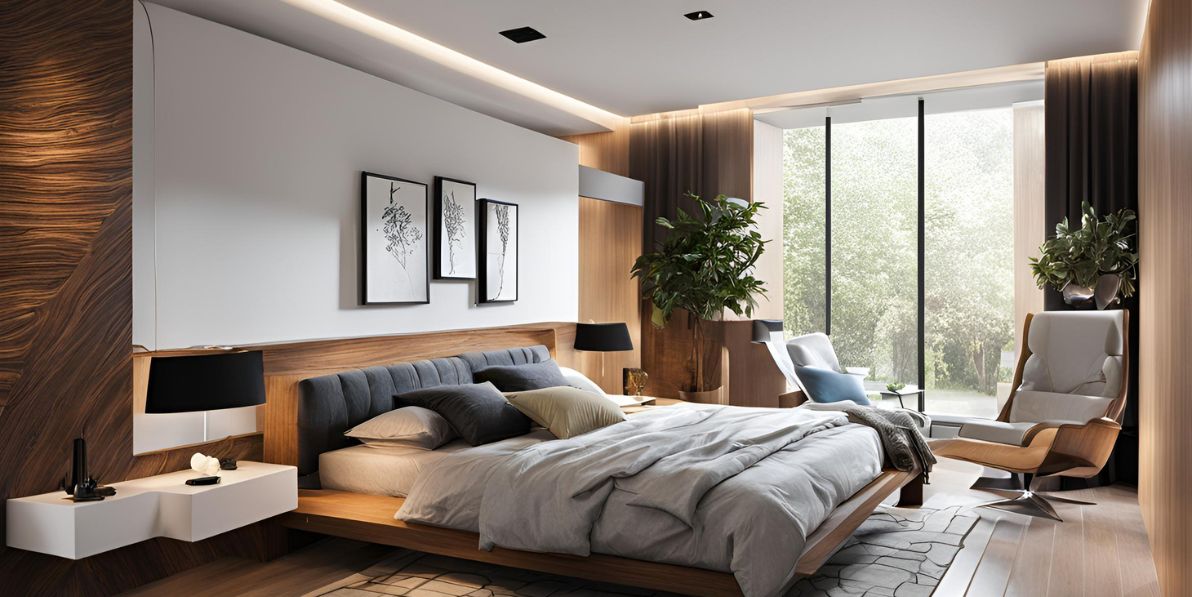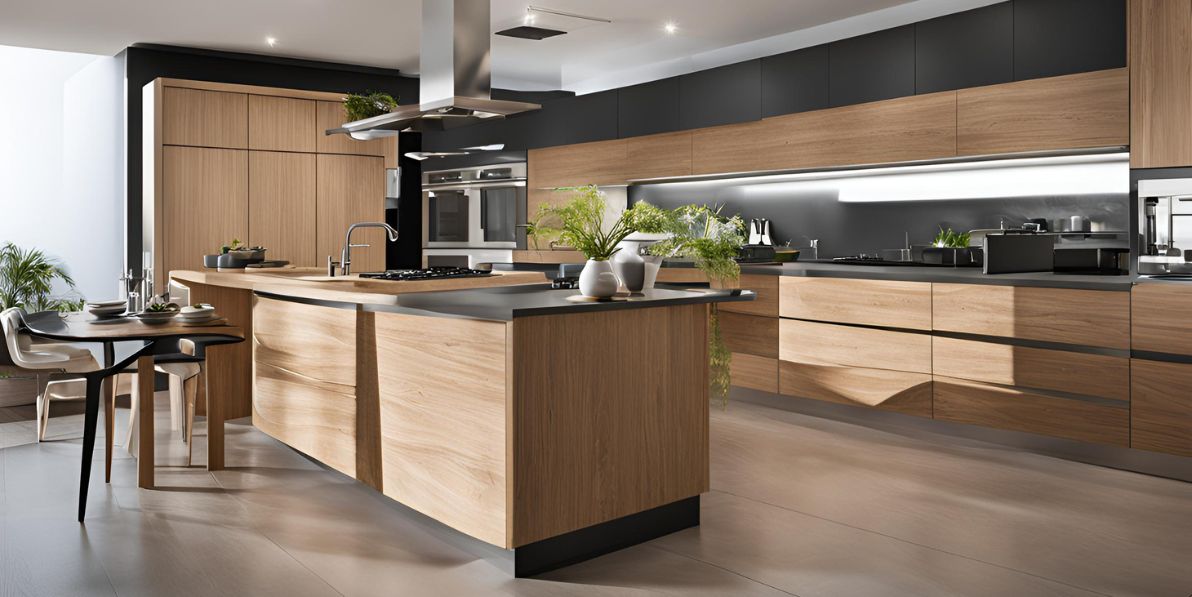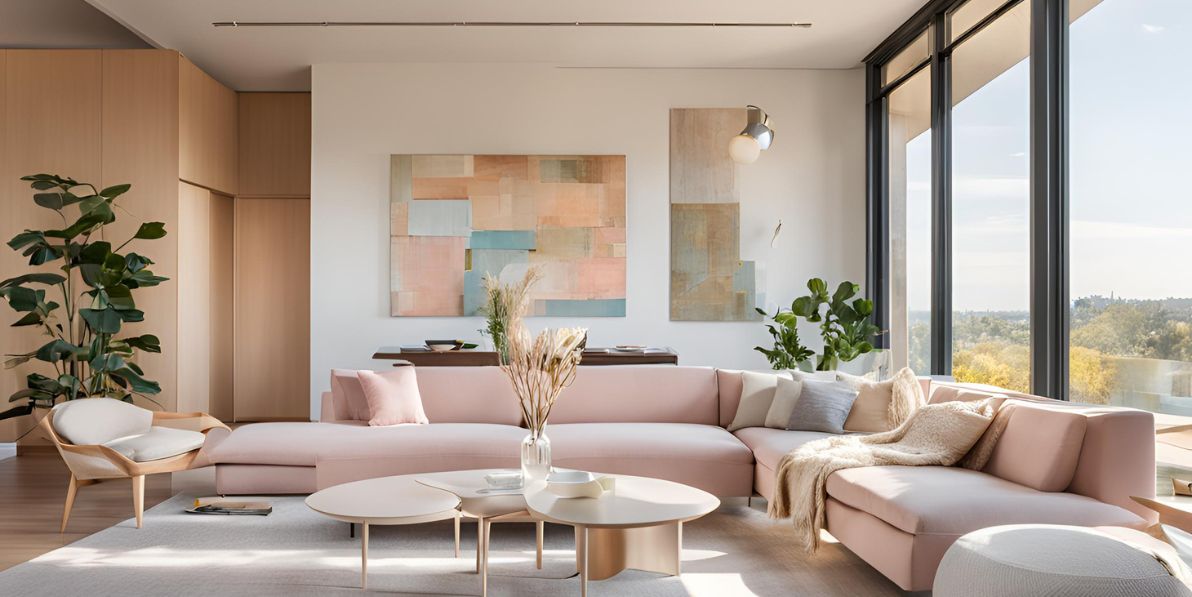AI Interior Design 2024 | Everything You Need to Know
9/11/2024
Interior design has come a long way in the last few years, where the use of technology defines home space. AI is now at the forefront, changing the approach that is used in the designing, furnishing and even the accessorizing of homes. The application of AI tools in interior design has led to the cutting down of some processes that were earlier cumbersome and costly. This paper aims to discuss the effects of AI on interior design and more specifically how home design is going to be transformed in 2024 with HomeCenterAI, AI Room Planner, and Personal AI Design Consultants.

Table of Contents
- AI in Interior Design: The New Frontier
- AI-based room planners – the new era
- AI Home Design in 2024: Important Traits
- Advantages of Automated Interior Design
- Challenges and Considerations
- Conclusion

AI in Interior Design: The New Frontier
The application of artificial intelligence in various industries is increasingly becoming popular, and interior design is no exception. Artificial intelligence offers design and planning solutions by using information about the user’s preferences, the size of the room, or even the amount of light that enters the room. These tools help homeowners, designers, and even novices to design spaces that are beautiful and serve their intended purposes.
We have seen through such platforms as HomeCenterAI, that anyone can now design his or her home using Artificial Intelligence. This way, users can upload images of their rooms, choose the styles they like and get back the design for the places they have. This new method utilizing artificial intelligence provides the level of personalization that was possible only with professional interior designers.

AI-based room planners – the new era
The use of AI in interior design has enjoyed some major developments, specifically the development of AI room planners. These tools enable the users to preview some of the possible layouts that could be made to the living spaces before the change is made. AI room planners give a virtual feel of the room and enable the users to virtually design the room by positioning the furniture and even changing the colour of the walls.
Some of the platforms such as HomeCenterAI have AI room planners that are easy to use and understand. Some of the features include the ability to select design elements and visualise how the rooms will look within a few clicks, hence coming up with decisions. This capability not only saves time but also takes out the uncertainty of interior designing so that every item would fit perfectly into the place.
AI Home Design in 2024: Important Traits
Looking at the future up to 2024, the following trends can be identified in the field of AI home design. AI technology is not only bringing efficiency into the design process but also making design more creative and personalized.
1. Hyper-Personalization
Some of these tools are offered by HomeCenterAI where designs are customized to the specific clients’ preferences thus enhancing the aspect of hyper-personalization. This level of customization takes into account issues like; room dimensions, configuration, the user’s preference, and practical needs. For instance, a user, who likes simplicity, but with an emphasis on form, may get recommendations on the functional shapes of furniture, non-vivid colors, and small-sized storage spaces.
2. Sustainability
Another application of AI in interior design is to act for sustainability. Hence, in the year 2024, we have observed that the conservation of environment through the design choices is the major trend. AI can also review materials and recommend appropriate sustainable ones that shall enable the users to create sustainable environments. AI can suggest energy-saving lamps and lighting, environmentally friendly furniture and materials that are environmentally friendly in line with the trend towards the environment’s protection all over the world.
3. Smart Integration
The concept of a smart home has become popular in 2024 and AI home design also incorporates smart home technology more frequently. It also means that AI tools do not only concentrate on the aesthetic aspect but also the practical and interactive aspects as well. AI can provide ideas on how best to integrate smart devices in a given room and the best place to install the lighting system, thermostat and entertainment systems. The combination of design and technology is making houses not only to be attractive to the eyes but also intelligent and resourceful.
4. AI-Powered DIY Projects
Thanks to the AI tools, do-it-yourself home improvement is much more achievable. Some of the applications include HomeCenterAI, which recommends DIY projects specific to the user’s situation, which they can then execute easily. When it comes to interior design and layout, AI gives the users a blueprint of what to do if they want to do it themselves such as moving furniture from one part of the room to the other to maximize the space or even designing customized decorations.

Advantages of Automated Interior Design
Automated interior design, powered by AI and machine learning, provides several advantages: 1. Increased Efficiency.
Some of the automated design tools used to assist in the shortening of the time spent in developing and selecting the design concepts include; A user inputs room dimensions and preferred style and within a few seconds receives several options on the layout.
2. Cost-Effectiveness
This professional service may be expensive since you will have to engage the services of an interior designer. The automated tools are cheaper as they provide professional design solutions at cheaper prices hence expanding design services to the people.
3. Personalization and Customization
AI-based designs entail the use of an intelligent tool to take into account the user inputs such as the style, size, functionality and space. This makes the final layout to be by the user and the specific needs that he/she has for the computer.
4. Visualization Capabilities
Almost all the automated platforms allow the creation of 3D models of the space in question with different designs. This form of presentation eliminated guesswork and as a result, any implementation is done after a lot of planning has been conducted.
5. Fewer Opportunities for Error Mediated by Human Interference
There are few mistakes in space measurement and arranging the furniture or other objects and AI does not commit basic mistakes in this process. This increases the efficiency in design planning which may assist the users in avoiding costly errors throughout the implementation stage.
6. Accessibility
CAD tools are very easy to apply, this implies that even those individuals who have no idea about design can also take part in the designing process. Their websites such as HomeCenterAI present a set of professional designs for everyone with an internet connection.
7. Sustainability Integration
This is because most of the automated design platforms integrate sustainability into the design process through the suggestion of green materials and energy resources. They can decide how much natural light can be let into a room or even what kind of insulation may be needed to foster better green home design.
8. Flexibility and Iteration
The use of different layouts, colours and places of furniture makes it possible for the users of the AI design platforms to conduct tests. This flexibility enables users to tweak and optimize their designs to arrive at the right solution for the environment at hand irrespective of the time and cost.
The use of computers in interior design solutions has brought changes to the practice of the field as it simplifies the work, shortens the time taken and focuses on the client. These innovations enable users to create spaces that are more attractive, efficient and friendly to the environment with more attractiveness, efficiency and friendliness and less constraints from costs, time and knowledge.

Challenges and Considerations
Automated interior design comes with several challenges and considerations: The following are the challenges and considerations that come with automated interior design:
1. Limited Creativity
This is because at some point the AI tools may not have the human touch in their work as compared to the professional designers. They can be very helpful in thinking up rather practical concepts, but they can be far from profound, or as inspirational as a human reflex.
2. Standardized Solutions
Therefore, based on the principle of working with coded algorithms and data, AI may give traditional design solutions hence restricting more creative designs.
3. Dependence on Technology
Automated design tools rely on internet connection and devices, which are easily available to everyone but that is not the case. It is also likely to cause dissatisfaction among the users who may prefer to consult the services provider in person or use traditional techniques of designing the devices.
4. Data Privacy Concerns
As with many other social platforms, the recruitment of users’ data to provide them with design solutions could be a source of privacy concerns. The concern of individuals can be over the storage and processing of the data they provide, their home data, or preferences about AI.
5. Limited Contextual Understanding
AI cannot understand the peculiarities of a place including the sentimental value that some items have or the needs of a certain home. While it can provide the optimal design layout it may not factor in such a personal or even an emotional factor hence giving less desirable product outcomes.
6. Upfront Learning Curve
On the same note, it should be noted that for users who are not conversant with AI design tools, it may take a while to get acquainted with the tools. Indeed, even the simplest apps and websites assume that the audience is at least somewhat versed in technology and design, which may put off the latter if they are not.
However, AI interior design is still helpful for homeowners and professionals since it offers variants that help save time and can be adjusted to one’s liking to some extent, however, there are some disadvantages.
AI Enhances the Efficiency of Interior Design
The use of Artificial Intelligence (AI) in the field of interior design is gaining popularity, offering innovative design and planning solutions. AI tools use data about user preferences, room size, and even the amount of natural light to help homeowners, designers, and enthusiasts create beautiful and functional spaces.
Here are several ways AI improves the efficiency of the interior design process:
- Increased Efficiency: AI tools reduce the time required to develop and select design concepts. Users can input room dimensions and a preferred style, receiving multiple layout options within seconds.
- Cost Savings: Instead of hiring a professional interior designer, which can be expensive, automated tools offer professional solutions at a lower cost.
- Personalization: AI tools consider factors like style, size, functionality, and space to create layouts tailored to the user’s specific needs.
- Visualization Capabilities: Many AI platforms allow for the creation of 3D models of the space with various designs. This method removes guesswork and ensures thorough planning before implementation.
- Error Reduction: AI reduces human errors in measuring spaces and arranging furniture, increasing efficiency in the design process.
- Accessibility: AI tools make the design process more accessible, allowing people without experience to participate. Websites like HomeCenterAI offer a range of professional designs to anyone with internet access.
- Sustainability Integration: Many AI design platforms incorporate sustainability considerations into the design process, offering eco-friendly materials and renewable energy resources.
- Flexibility and Iteration: AI allows users to experiment with different layouts, colors, and furniture arrangements, providing maximum flexibility in the planning and customization process.
Conclusion
It can be said that AI is becoming a driving force that changes the interior design industry for the better by making it more accessible, efficient, and tailored to individual clients. In 2024, such programs as HomeCenterAI exist, which have the best AI tools for designing the interior at request and without any errors. The use of AI in home design is making home design smart by providing room planners, creative designs and specific designs that fit specific needs. However, the future is bright for AI in interior design since it is going to improve efficiency, sustainability, and customer experience in the production of beautiful interior spaces.
More articles

AI Kitchen Design – From Beginner to Expert
Discover how AI kitchen design can simplify the process of creating an efficient and beautiful kitchen. Learn about the best AI kitchen design generators and essential tips for your next renovation project.
Read More

Interior Design 25 Trends That Stand the Test of Time
Explore 25 interior design trends from 2024 that will continue to inspire in 2025. We’ll help you clear the clutter and get inspired – come check it out!
Read More

How AI is Changing Interior Design: Real-World Examples
Case studies of AI use in design projects around the world demonstrate how technology is making the design process faster and more efficient. This impact translates into significant benefits for us, the consumers.
Read More

Bedroom Design: Creating a Relaxing and Inviting Space from 0 to 100
Designing a bedroom is more than just arranging furniture it's about crafting a serene and comfortable retreat. Whether you’re starting from scratch or revamping your space, a thoughtful approach to choosing colors, lighting, and furniture is key to creating an inviting atmosphere. This guide will walk you through essential bedroom design elements, focusing on how to create a calm environment perfect for relaxation.`
Read More

How AI Can Help in Designing Small Spaces: Tips and Ideas
Interior design for small spaces can be quite a challenge, but with AI-powered interior design tools, this task can become significantly easier. AI offers smart and creative solutions for maximizing space utilization while maintaining aesthetics and comfort. In this article, we will explore how AI can assist in designing small spaces, offering tips and ideas for practicality and aesthetics.
Read More

Beginners Guide: How to Use AI to Design Your Home | 2024
Designing your home can be an enjoyable and fulfilling process, especially when you have the right tools. With rapid technological advancements, artificial intelligence allows us to design our homes more easily and accurately than ever before. In this guide, we will learn how to use AI to design your property quickly and effortlessly.
Read More




